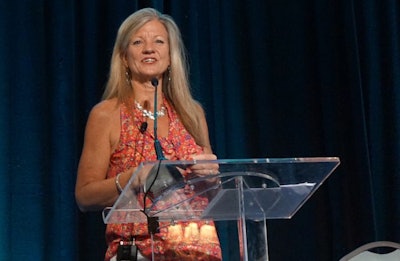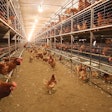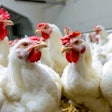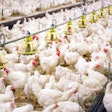
“The impact of the images is what matters,” said Hinda Mitchell, president, Inspire PR Group. She told the audience at the 2019 Chicken Marketing Summit in Charleston, South Carolina, on July 23, that consumers don’t trust who they don’t know, so poultry companies need to tell their story before the activists give their version.
Mitchell said activists have been sharing undercover pictures and video of poultry operations for years, and the poultry industry in general is a little late coming to the party. She complimented the National Chicken Council on its Chicken Check In program, but individual companies need to be transparent as well.
Consumers don’t distinguish between farms and processing plants, according to Mitchell, so it is up to poultry producers to tell their own story, and she said pictures and video are the most powerful tools for communicating with consumers, particularly younger generations. She said challenging how a video or pictures were taken after they are released with activists is a losing strategy, because the source of the images is irrelevant to most consumers. Poultry producers need to have shared pictures and videos about their production practices, before the activists do. She said that transparency will make poultry producers uncomfortable, but it is essential for telling their story and building consumer trust.
Dealing with bias
When communicating your story, Mitchell said poultry producers must be aware of two kinds of bias, confirmation and anchoring. Confirmation bias refers to the tendency for people to search for and recall information that confirms a preexisting belief and that they want to be true. For instance, the small percentage of consumers, Mitchell said 10% or less, that already believe poultry producers provide poor animal care will be disinclined to believe alternative theories and inclined to believe in the objectivity of an activist video. She said communications should really be targeted for the 80% of consumers who don’t have any preconceived notions or concerns regarding how poultry are cared for.
The tendency of consumers to make decisions based on the first pieces of information they’ve heard is called anchoring bias. She said animal agriculture in general has let the activists get out in front on many issues, so producers have been playing perpetual catch-up.
Crisis is not a competitive advantage, because it hurts all producers within a commodity, Mitchell said. It is incumbent on all producers to be more transparent and share their unique story. She said that transparency is about more than just opening the door to your farm or processing plant. Social media is an important tool for communicating with consumers, but Mitchell said that you can’t just push your message, you need to engage consumers in a conversation.
Because images are so powerful at conveying stories and because most consumers will never visit a poultry farm or processing plant, Mitchell said that investing in video is worthwhile. She also suggests using animations to help communicate complicated messages in a manner that is easy to understand.


















